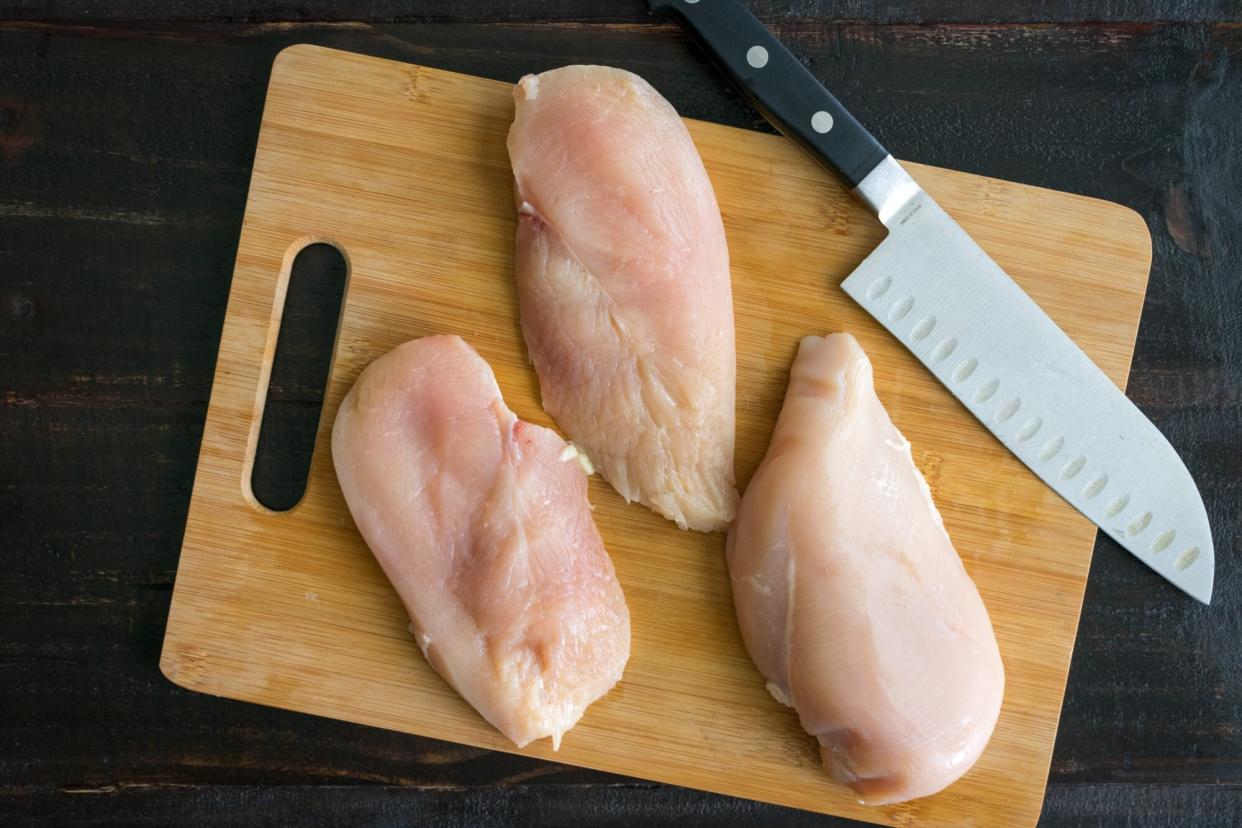Is It Safe To Cut Raw Meat on a Wood Cutting Board?

Getty Images
Wooden cutting boards are beautiful, but are they safe to use for all of your culinary ventures? While using them for cheese boards and carved meats is one thing, what about raw poultry and fresh produce? We asked two food safety experts: Lisa Robinson, vice president of global food safety and public health at Ecolab, and Britanny Saunier, executive director at the Partnership for Food Safety Education, to share their wooden cutting board wisdom and if there are any foods we should avoid cutting on them.
Can You Cut Meat on a Wood Cutting Board?
Our experts say cutting boards for both meat and produce can be wooden, although they do take more effort to clean and sanitize than cutting boards made from other materials. This is an important factor to consider when deciding the type of cutting board to use for different foods. Saunier says that wood cutting boards are more porous, giving bacteria easier access into the grooves than say, a plastic or pyroceramic board. However, if you do love the look of a wooden cutting board, Saunier advises opting for bamboo. (Check out this budget-friendly pick that our editors love).
Both Robinson and Saunier say that it's not so much about which foods you should and shouldn't cut on a wooden cutting board. It's more about ensuring you have multiple cutting boards for different types of ingredients. Robinson advises using one cutting board for fresh produce and bread while designating another board for cutting raw meat, poultry, and seafood to limit the risk of cross-contamination as much as possible.
"A separate board for raw meat or seafood keeps bacteria from contaminating your veggies, fruit, or other foods that require no further cooking," says Saunier. "Eventually, you'll cook your meat or seafood to a safe internal temperature as measured by a food thermometer, killing harmful bacteria. However, fresh veggies or fruit are often consumed raw and do not have a kill step. Having separate cutting boards will help reduce your risk of food poisoning."
"According to the USDA, bamboo cutting boards are harder and less porous than hardwoods," she says. "Bamboo absorbs very little moisture and resists scarring from knives, so they are more resistant to bacteria than other woods."
However, if your wooden cutting board has cracked or you notice a spot of mold growing on the surface, it's advised to discard the board immediately to keep illness and contamination risk at bay. Proper cleaning techniques will ensure your board stays in tip-top shape.
How To Clean Your Wooden Cutting Board for Safe Chopping
Robinson says that all cutting boards, wooden or not, can be properly cleaned by washing them with hot, soapy water after each use—yes, that means between chopping the onions, carrots, and celery. Then, she says your cutting board should be rinsed with clear water and air-dried or patted dry with clean paper towels. Wooden cutting boards especially should never be left in the sink or on a damp surface as it will cause the board to be more prone to contamination. Saunier says that you can also rub wooden cutting boards, including bamboo, with mineral oil to help them retain their moisture.
It's also important to remember that cleaning is not the same thing as sanitizing and will not necessarily kill germs. While soap and water will help remove germs and reduce your risk of illness, Saunier says that sanitizing your cutting board will actually kill germs and be your best defense against foodborne illness.
All types of cutting boards can be sanitized with a solution of one tablespoon of unscented, liquid chlorine bleach per gallon of water, according to Robinson. Once you've flooded the surface of the board with the mixture, it will need to stand for several minutes before rinsing and drying to be the most effective. Then you'll be able to rest assured that, so long as you are using a different board for produce and meats, your wooden cutting board is plenty safe to use for any recipe.

